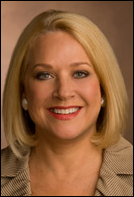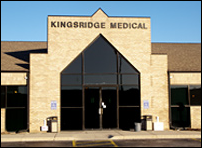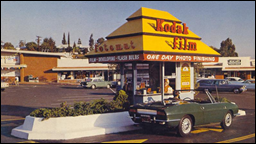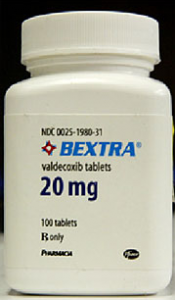
Karen Zupko is president of Karen Zupko & Associates, Inc., a medical practice consulting and training firm in Chicago, IL.
I understand you’re starting a new radio show on ReachMD on XM Satellite Radio. What will be the show’s focus?
That show launched on July 17th and people can access those spots. The series is called Practice Success. They are three-minute spots highly focused on a positive step that a practice can take. In some cases, an improved use of technology to lower accounts receivables, to reduce denials. In some cases, positive steps to be taken at the front desk to improve collections. The most recent spot that launched this week is on predicting whether you’re at risk for an E&M audit.
Those are all the past spots. Obviously, it’s on XM160, but it also is at www.ReachMD.com. The interesting thing, I think, is that there’s radio, there’s the Web, and all of this is, of course, accessible on people’s iPhones, which is pretty cool.
Another person on my team is Cheryl Toth. Cheryl has a very cool Webinar coming up about using technology in the practice level to improve communication with patients. She is really our queen of technology. She’s the KZA Queen of Tech
So it’s not a show per se, but actually spots that come up on different times of the day?
The spots come up four times an hour, and then it may expand into a larger show. These are short bullets — take this action step.
Have you gotten any feedback from listeners?
Yes, because some of them come back to our KZA Learning Center. So people are following up on those links.
How do you think healthcare will look in the next five years?
This may surprise people. I don’t think that even if legislation passes, it’s going to look dramatically different. Why do I think that? Because I think all of these health systems, the healthcare delivery, as you travel around the nation — which I have done extensively since the late 70s — everybody’s not at the same starting line.
You have one experience when you go to the Mayo Clinic. There is electronic medical record, and when you leave, you leave with a jump drive with all of your test results, versus many other academic medical centers that have yet to adopt the technology, or, have done it on the inpatient side, but not for ambulatory patients.
I think when you look at the technology adoption on the ambulatory side, whether that’s a hospital-owned practice, a multi-specialty group, or a private practice group down to the solo practitioners, for example, doing simple things like checking eligibility, easy things that should have been common sense like checking the patient’s ID versus their insurance card to be sure that the person and the card match, it’s a slog. That’s how I would describe it: it’s a big slog.
There is progress. The stimulus money is going to cause some people to get on with it faster than they would have if left to their own devices. I think the growing number of young physicians entering practice who are trained in technology are going to have a big impact as they become the majority.
But am I looking for the world to suddenly change? I’ve been working in healthcare since 1973. I’ve been through more physician manpower studies than you can shake a stick at [laughs]. Just like every five years, I expect somebody to pronounce with great definitiveness, “We have too many doctors.” “No, we don’t have enough.” “Too many.” “Not enough.” It’s like the tide goes in, the tide comes out. So it’s kind of where I sit.
Will there be major changes to the way doctors get paid or the type of insurance patients use?
I think that there are people, as we speak, looking at different payment options that are going to definitively reward people who have thought about cost, who have thought about collaboration, who have thought about the benefits of a central record, so when you look at those proposals that say, “We’re going to pay everybody for doing this hip, or doing this knee, or doing this heart, and this is the amount of money, and you all are going to figure out how you’re going to divide that up.” I think it’s pretty clear in all of this discussion that paying doctors based on volume of services provided hasn’t proved to be particularly successful.
So that system may go away?
I think it’s going to be reshaped. Again, it’s so vast. You have to be very careful about the law of unintended consequences, you know, like you push here, and it causes four bubbles over there that you didn’t really think about.
I don’t know where you were then, but when Oregon began discussing the fact that under Medicaid, not everybody was going to have everything. There wasn’t the money. So we’re not paying for the removal of benign lesions — benign lesions are benign. So that was probably 15, 20 years ago. It caused a lot of stir.
I think that the disingenuous elements that have been inserted into the current considerations. Those people should be ashamed of themselves. Death panels — I mean, please.
What type of IT tools do you think are a must for every doctor’s office?
Well, first of all, I think they need a computer.
To do what?
You absolutely have to have a computer to do more than e-mail. We should be doing all the scheduling, we should be using these cool, nifty tools such as the functionality offered by companies like Medfusion. Patients should be registering online. That data should then be dumped to the practice management systems. I’m working with practices to do that.
Companies like A-Claim that allow a practice to check the eligibility, that allow you to determine if the deductibles been met, what the co-pay really is, and is that service covered. Companies like RealMed and A-Claim both that allow for adjudication of claims while the patient is standing there.
We still go to practices that are not filing electronically because of the cost, unbelievably, and therefore, they are not getting electronic remittance, and not getting electronic payments, which therefore require that you have more people in the business office doing busy work. You would want to be using automated systems that take a promise to pay and turn it into the reality of payment.
I just had a conversation with a doctor today about meeting with his billing office staff. They have a half million dollars in receivables. It’s just totally, completely inefficient and incompetent. And then, if I get the business side done, then I would have the money certainly and price would not be the biggest objection to doing the electronic health record.
We go to practices that have a robust computer system, and somebody’s just decided to go dumb and not figure out how to do PQRI, or get the credits from e-prescribing. We think 4% of your Medicare money on the table — I mean it’s just hugely expensive.
That’s not an IT issue, that’s a personnel issue.
They can’t figure out how that is going to work. It is an IT issue. You know what, there are very few things, I think, as we go on, that are just an IT issue. I think in many cases — let’s do this as a summary statement — the technology is ahead of the skill set of the people who have to use it. We’ve got very sophisticated tools, and very unsophisticated users.
Are you saying the tools need to be easier to use or we need to get the personnel up to speed?
I think it has to be a combination of both. I think the description of how to do PQRI was rather poorly articulated by the government to start out with. And then some people tried, and were unsuccessful, and then they just say, “What the hell with it, then?” Does that make sense to you?
Yes. So, is the EMR an essential tool?
If you were a young doctor starting out in practice, then I would say absolutely, positively yes. If you were a six-doctor group with receivable problems, were an update or two behind on the practice management system, and have a lot of business process issues, I’m probably not going to tell you to race to implement the EMR at this moment. I think there are just so many things that you can try to do while the practice is seeing a full load or a full load plus of patients.
That may mean they’re going to leave some of that ARRA money on the table.
Right. I think practices have to up-hire. They’ve got to look at the level of people that they’re hiring. They have to buy more advice out in terms of tech. Do you understand that in many of these practices, the back-up is being done on a tape that sits on a shelf three feet away from the computer? I could not make this stuff up.
So the sophistication is not there?
Well, even if somebody can say, “I understand this is a problem,” — and I’ve got such a person right now; she is very articulate about what the problems are. She is not a technology wizard. She said, “I’ve got this problem, and it’s on this server, and that server has this issue; I need this fixed. I’m not even sure who can help me.” Then she calls two tech companies; one comes up with a support figure so unbelievable, something like $8,000 a month. The other one comes back three times and can never quite take notes about getting the story down, and they’re tech support. So it’s rather frustrating, to tell you the truth.
What’s the answer for the average doctor’s office that wants to move forward in technology? Outsource it?
Outsourcing what piece of it? You do have to outsource the hardware support and the backup. I would say one clear and positive thing that anybody reading this should do, and that is, please, double check, filled with skepticism, that your backup is as good as it should be and needs to be. If a comet fell out of the sky and hit your office while you were not there — you were at home sleeping — do you have the backup to be able to say or put out on the Internet, “Hey, we’re three blocks over in rented space, you can come and see us here,” and you can have everybody’s medical records and all the financial information.
I guess that’s the test. A comet hit your office. Boom! And if it’s not that good, and somebody’s not willing to put that guarantee in writing — “Yeah, it’ll take a couple of hours, we’d have to get the computers hooked up” — but the backup system is somewhere else, the backup tape is not three feet away [laughs] from the hard drive. Do you see what I mean?
Or somebody says, “Oh, it takes so long; we only back up once a week.” Can they afford to lose a week’s billing and scheduling? Medical records? No.
There’s been a whole series of emails back and forth between us and one of our consultants who’s now actually running a practice. All the doctors are using these iPhones to connect and the level of security that needs to be on the iPhones so if somebody picks it up, they can’t get into your EMR system.
And is it secure?
It depends. On her practice, absolutely, yes. There’s a lock and there’s an ID, but I’m going to guarantee you that for plenty of doctors, that’s not the case.
And you think there are still a lot of practices out there only doing backups once a week, for example?
Yes. Yes. I promise. I’m not naming names, but I’m not making that up, honey. [laughs]
Alarming.
Alarming, yes. And it’s not that these are dopey doctors. These are doctors medically who you would want taking care of you. We still have a long way to go.











The article about Pediatric Associates in CA has a nugget with a potentially outsized impact: the implication that VFC vaccines…